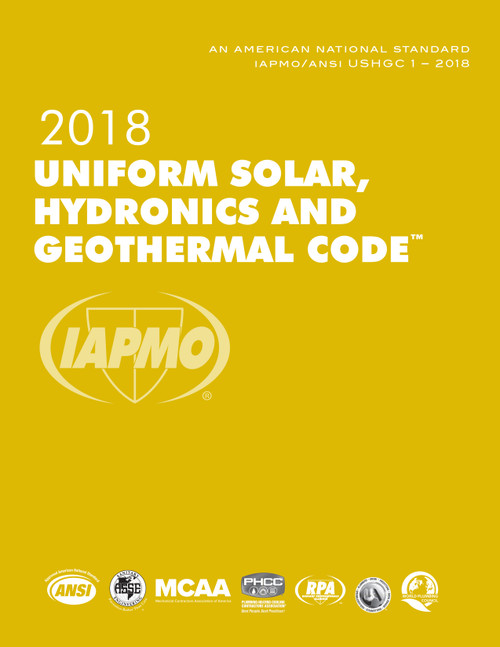No Refunds on eBooks
Products downloaded are not to be reproduced or redistributed in any way.
The Uniform Solar Energy and Hydronic Code is a model code developed by IAPMO to govern the installation and inspection of solar, hydronic, and geothermal energy systems as a means of promoting the public’s health, safety and welfare. Published previously as the Uniform Solar Energy Code, the 2015 edition adds significant provisions concerning hydronic and geothermal systems.
Key provisions of the 2015 USEHC and changes from the 2012 edition include:
• New condensates waste and control provisions for condensate-producing equipment and appliances
• New alternative engineering design provisions
• New provisions for the accessibility, attic, and underfloor installation, and roof installation of appliances and equipment used in a solar energy, hydronic, and geothermal energy systems ? New hydronics chapter provides minimum requirements for the capacity of heat sources, heating appliances and equipment, piping, joints and connections, system controls, space heating, steam systems, radiant heating and cooling, auxiliary systems, snow melt systems, and the installation, testing and inspection of hydronic systems
• New solar thermal provisions, such as materials, solar collectors, freeze and overheat protection, drainback, thermosiphon, and pressure testing
• New geothermal energy systems chapter provides minimum requirements for groundwater systems, ground-heat exchanger design, heat exchangers, heat pumps and distribution design, and the installation of geothermal energy systems
• New duct systems chapter provides minimum requirements for ducts used for conveying air for heating and cooling of spaces
• New electrical provisions for the installation of solar photovoltaic systems based on NFPA 70-2014 IAPMO first developed and published the Uniform Solar Energy Code in 1976 in response to a growing interest in residential and commercial solar energy systems. Just like the 2009 and 2012 editions of this code, the 2015
USEHC was developed using the American National Standards Institute (ANSI)-accredited open consensus process.







